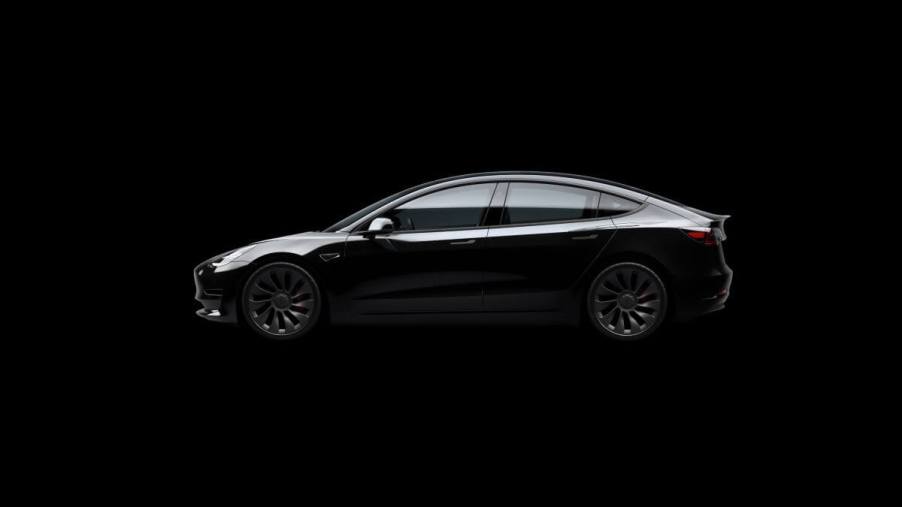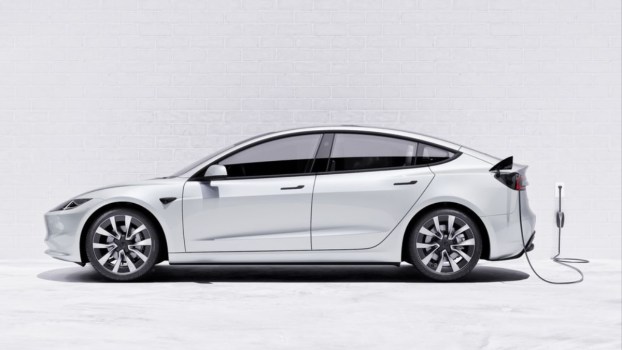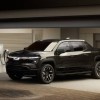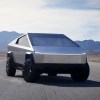
How Much Horsepower Does a 2021 Tesla Model 3 Performance Actually Have?
As far as electric cars go, the Tesla Model 3 is one of the current best-sellers. Still, while Tesla boasts some serious performance figures on its site, the model’s exact horsepower output is not one of them.
Thankfully, Misha Charoudin on YouTube took a 2021 Tesla Model 3 Performance to a dyno to see exactly how much power it develops. It seems Tesla might be a bit conservative with its stated horsepower figure in a bit of a surprising twist. However, testing it isn’t a simple task.
How much power should the 2021 Tesla Model 3 Performance have?
The 2021 Tesla Model 3 is available in three trim levels. However, the one we’re looking at today is the top Performance trim. The Performance starts at a fairly expensive $55,990 without options. If you factor in all available options, you’ll pay around $67,990. For this, you get an EV that can hit 60 mph in 3.1 seconds and a top speed of 162 mph.
According to GuideAutoWeb, the Tesla Model 3 develops a combined output of 480 horsepower. Of that total output, 283 hp comes from the rear electric motor, while 197 hp comes from the front motor. According to Charoudin’s video, the Model 3 should produce around 450 hp from the factory. Unfortunately, Tesla does not publicly state how much horsepower this specific trim level develops, so take these figures with a grain of salt.
Regardless, even if these Tesla Model 3 estimates are accurate, the EV manages to surpass them easily.
How do you test an EV with a dyno?
Since the Tesla Model 3’s design has aerodynamics and efficiency as its main priorities, it takes some preparation to get it prepared for a dynamometer test. In Charoudin’s video, the team first takes off some of the EV’s under panels. This is so straps can hold the car in place as it runs on the dyno.
Since the Tesla Model 3 doesn’t need airflow to cool down an engine, the large fan that cars typically need during dyno testing isn’t necessary. Regardless, Charoudin opted to run the EV with and without the fan to compare results.
One of the final and most important parts of this 2021 Tesla Model 3 Performance test is engaging a hidden dyno mode. In short, the mode turns off all safety features and any systems that could hinder performance during a dyno test. Last year, the brand issued an update to remove it. However, as Charoudin shows, the mode is still there, just hidden in plain sight.
During the first run without dyno mode engaged, the EV began to steer itself off the dyno. As a result, activating it is necessary to conduct a safety test.
This Tesla is making significantly more horsepower than expected
Once the technician strapped the 2021 Tesla Model 3 Performance into the dynamometer, things got very interesting. As far as the video shows, the EV ran several runs back to back to test max power and how it holds up over a few tests. Additionally, a 2020 model ran on this same dyno previously, so we also have data to compare.
For starters, the 2020 Model 3 developed 523 hp and 707 lb-ft of torque at the wheels. In contrast, the newer 2021 model produced 522 hp and 650 lb-ft. However, the most crucial bit of information has to do with the actual power delivery. While the 2020 car’s power output tapered off fairly quickly, the 2021 held more power over higher speeds. As a result, the 2021 car should feel quicker on the street.
In a standard internal combustion car, you lose hp as power leaves the flywheel and goes through the powertrain. However, on an electric vehicle, there isn’t an exact formula to calculate any losses. As a result, we don’t know precisely how Tesla measures horsepower at the factory. What we do know is that the Model 3 is seriously powerful.




